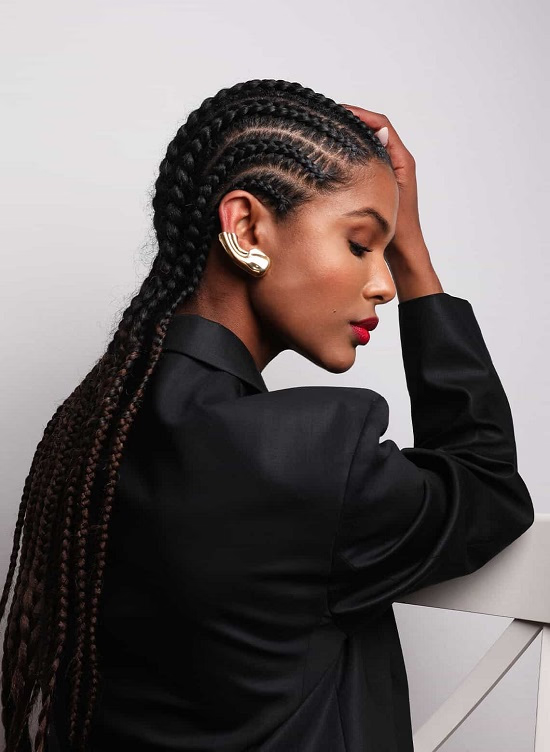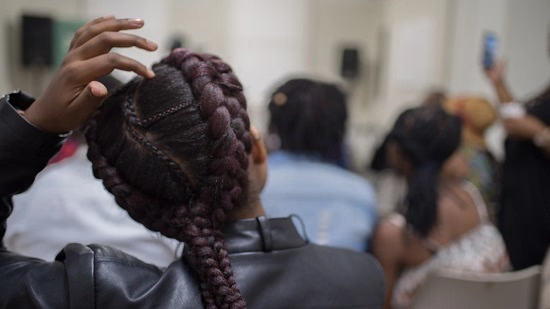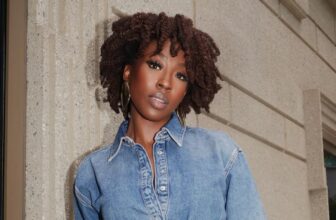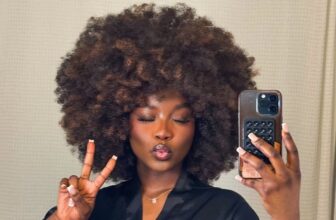Is Braiding Hair Causing You Allergic Reactions?
Braiding hair has become a staple in African beauty, loved for its versatility, durability, and the way it enhances different hairstyles. From box braids to twists, braids are a popular choice for women worldwide.
However, while braids can feel empowering and beautiful, they may have an unexpected downside: allergic reactions. Your braiding hair could be causing harm without you even realizing it.
As braids continue to dominate the beauty scene, more people are discovering that the synthetic hair used for these styles might be triggering allergic reactions. This is an issue that’s only gained attention recently as we become more aware of how braids affect our bodies, especially our hair.
While we usually think of allergies in relation to food, pollen, or pets, synthetic hair fibers, commonly used in braiding, braids can also be a hidden source of allergens. Many people don’t realize that braiding hair they trust might be behind their reactions.
Braiding hair is typically made from synthetic fibers like kanekalon, which is designed to mimic natural hair. However, the chemicals used to create these fibers can cause skin irritations, allergic reactions, and even damage to your scalp.
If you’ve noticed itching, redness, swelling, or bumps after getting braids, your braiding hair could be to blame. Ahead, let’s look into the risks of braiding hair, explain the science behind these reactions, and provide tips on how to protect yourself.
The Rise of Synthetic Hair in Braiding
For years, synthetic braiding hair has been the go-to choice for styling. Made from synthetic fibers like kanekalon, toyokalon, and polymers, these materials are affordable, easy to manage, and come in an array of colors and textures, making them a popular option.
These fibers allow people to achieve bold styles while providing durability and flexibility, and they are readily available in beauty supply stores.
 Photo: Getty Images
Photo: Getty Images However, the same elements that make synthetic hair attractive—its durability, color fastness, and low cost—are also what make it potentially harmful. The chemicals used to produce synthetic fibers can pose health risks to individuals with sensitive skin or hair, and prolonged exposure can lead to allergic reactions.
What Are Allergic Reactions to Braiding Hair?
An allergic reaction occurs when your body’s immune system overreacts to a foreign substance, known as an allergen. In the case of braiding hair, the allergen can be the synthetic fibers used in the hair or the chemicals involved in the manufacturing process.
Some of the most common allergic reactions include:
Itching and Rashes:
The most common sign that your braiding hair is causing an allergic reaction is a persistent itch or rash on your scalp, forehead, neck, or around your hairline. The reaction may occur immediately after installing your braids, or it may appear a few hours or days later.
Swelling and Inflammation
Some individuals may experience swelling around the scalp or hairline. This can make the scalp feel tight, sore, and uncomfortable.
Flaking or Scalp Sensitivity
Another sign of an allergic reaction is when your scalp becomes overly sensitive or develops flakes resembling dandruff. In extreme cases, this could lead to scalp infections if left untreated.
Burning Sensation
In more severe cases, individuals might feel a burning sensation or a feeling of heat on the scalp, along with the other symptoms mentioned above.
The unfortunate reality is that many people dismiss these symptoms, chalking them up to ordinary scalp discomfort, ignoring that they might be allergic to the synthetic fibers in the hair.
Why Does Braiding Hair Cause Allergies?
Most synthetic braiding hair is made from polymers and other plastic-like materials, which, when heated or processed, release certain chemicals like formaldehyde, phthalates, and other toxins.
While these chemicals are generally used to treat the fibers to make them more pliable and colorfast, they can also cause severe allergic reactions in sensitive individuals.
Formaldehyde, for instance, is commonly used to set the texture and prevent tangling, but it is a known irritant and can trigger allergic reactions ranging from mild rashes to severe respiratory problems. Similarly, phthalates—used to make the fibers softer and more flexible—have been linked to skin irritations and other health concerns.
Additionally, the heavy dyeing process used to create the wide range of vibrant colors available in synthetic hair also contributes to these reactions. Hair fibers soaked in artificial dyes and chemicals may release toxic residues that your skin absorbs, increasing the likelihood of an allergic reaction.
 Photo: istock
Photo: istock It’s easy to overlook how the braiding hair we use might be affecting our health, especially if we’ve been styling our hair with it for years without any major issues. The problem lies in the delayed onset of allergic reactions. Sometimes, it might take several days or even weeks for symptoms to manifest.
However, as more and more people share their experiences online and in beauty communities, a pattern has emerged. People who have had no issues with braiding hair in the past suddenly find themselves experiencing unusual scalp discomfort, excessive itching, swelling, or even hair loss. And in some cases, individuals who have had braids for years without issue are suddenly sensitive to the chemicals present in the synthetic fibers.
This can be incredibly frustrating for individuals who have enjoyed braiding their hair as a part of their beauty regimen.
The allergic reaction often results in the need to remove the braids prematurely, which can lead to damaged hair and an irritated scalp. In some cases, the allergic reaction can be severe enough to require medical attention.
How to Minimize the Risk of Allergic Reactions to Braiding Hair
While it’s difficult to entirely eliminate the risk of allergic reactions to braiding hair, there are steps you can take to protect yourself and minimize exposure to harmful chemicals:
Choose Natural Hair Alternatives:
If you are particularly sensitive to synthetic fibers, consider opting for natural hair extensions. Human hair is a safer alternative, as it is less likely to cause allergic reactions. While it may be more expensive, it eliminates the risk of chemical exposure from synthetic fibers.
Pre-Wash the Braiding Hair:
One way to minimize the exposure to harmful chemicals in synthetic braiding hair is to wash it thoroughly before installing.
This can help remove some of the excess chemicals and residues that can cause irritation. A gentle wash using a mild shampoo can help, followed by a thorough rinse and air-drying.
Test the Hair Before Use
If you’re using new braiding hair, do a patch test on a small section of your skin before fully committing. This will help you gauge whether or not the hair will cause an allergic reaction. Testing a small area of your scalp or behind your ear can be a good way to check for skin irritation.
Be Mindful of the Tightness
Tight braids may exacerbate allergic reactions, as they put pressure on the scalp. Avoid overly tight braids that can cause scalp trauma and irritation.
Use Chemical-Free Products
When installing braids, try using products that are free from harsh chemicals like formaldehyde, parabens, or sulfates. There are now more options available for safer, chemical-free hair care that won’t irritate your scalp.
Seek Professional Help:
If you experience a severe reaction, remove the braids immediately and consult a dermatologist. They may recommend treatments or a course of action to help ease the irritation and prevent it from happening again.
While taking personal precautions can help reduce the risk of allergic reactions to braiding hair, the beauty industry also needs to step up to ensure product safety.
Many companies still use harmful chemicals in hair products without enough regulation or transparency, which can lead to negative side effects for consumers. As awareness of the risks of synthetic hair fibers grows, manufacturers should be more responsible and adopt safer, more sustainable practices.
Beauty influencers, stylists, and suppliers also have a role in educating their clients about the potential risks of braiding hair. Opening up conversations about this issue will help consumers make informed choices about the products they use.
Until that happens, it’s up to us as consumers to take precautions to avoid allergic reactions. So, the next time you’re choosing that stylish braid, remember to think about not just the look, but the possible impact on your health. Your braiding hair might be more than just a fashion statement—it could be affecting your scalp in ways you didn’t know.
Photo: Arnold Jerocki / Getty Images
You May Also Like:
15 Chic Braided Bob Hairstyles to Try for a Confident Look
December 23, 20255 Ways Honey Can Transform Your Hair Routine Naturally
December 22, 202515 Festive Holiday Hairstyle Ideas That Will See You Through The Season
December 10, 2025How to Maintain Natural Hair Moisture During The Festive Season
December 9, 2025Kim Kardashian Expands Skims Into Hair Care With New Tangle Teezer and Slip Collabs
December 2, 2025How To Protect Your Natural Hair Under Wigs
December 1, 2025Pixie Cut Fever: Every Black Woman Suddenly Wants the Big Chop
November 5, 2025The Best Hairstyles for Women Over 50, According to Real Women
November 3, 2025Cardi B Says She Hasn't Washed Her Hair in 3 Months and Fans Does Not Like It
October 31, 202520 Sew-In Hairstyles So Gorgeous You’d Want to Screenshot
October 30, 2025Is 2025 The End of the Natural Hair Movement?
October 23, 2025Miley Cyrus Debut a Short Curly Blonde Hair and It's Cute
October 21, 2025Esther Ejoh is a Fashion Editor at Fashion Police Nigeria, where she writes all things fashion, beauty, and celebrity style, with a sharp eye and an even sharper pen. She’s the girl who’ll break down a Met Gala look one minute, rave about a Nigerian beauty brand the next, and still find time to binge a movie or get lost in a novel. Style, storytelling, and self-care? That’s her holy trinity.





